Kingston SSDNow V300 (120GB & 240GB) Review
by Kristian Vättö on April 30, 2013 12:30 PM ESTRandom Read/Write Speed
The four corners of SSD performance are as follows: random read, random write, sequential read and sequential write speed. Random accesses are generally small in size, while sequential accesses tend to be larger and thus we have the four Iometer tests we use in all of our reviews.
Our first test writes 4KB in a completely random pattern over an 8GB space of the drive to simulate the sort of random access that you'd see on an OS drive (even this is more stressful than a normal desktop user would see). I perform three concurrent IOs and run the test for 3 minutes. The results reported are in average MB/s over the entire time. We use both standard pseudo randomly generated data for each write as well as fully random data to show you both the maximum and minimum performance offered by SandForce based drives in these tests. The average performance of SF drives will likely be somewhere in between the two values for each drive you see in the graphs. For an understanding of why this matters, read our original SandForce article.
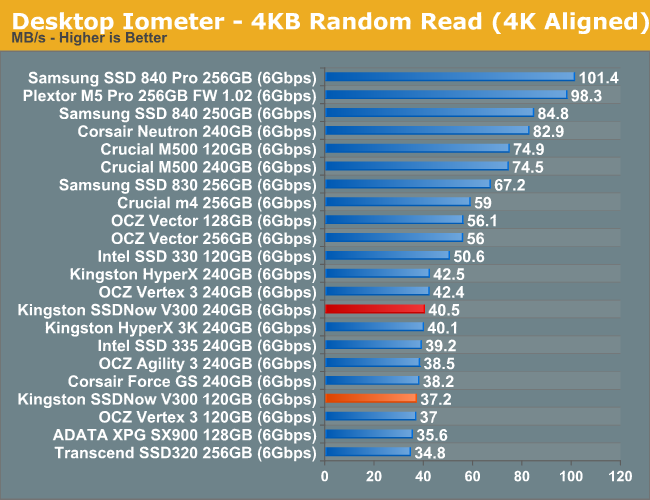
Random read performance is similar to other SF-2281 SSDs; only Intel has a small advantage here.

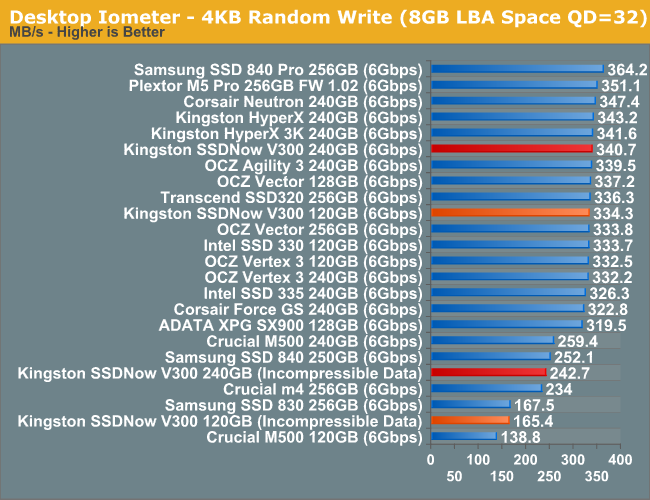
Random write speed is also typical SandForce. The 120GB model does take a pretty big hit when using incompressible data because there's less parallelism due to fewer NAND die.
Sequential Read/Write Speed
To measure sequential performance I ran a 1 minute long 128KB sequential test over the entire span of the drive at a queue depth of 1. The results reported are in average MB/s over the entire test length.

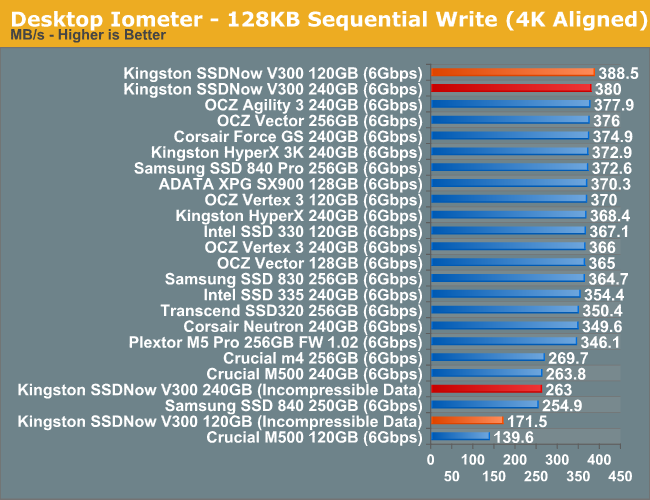
No surprises in the sequential Iometer tests either.
AS-SSD Incompressible Sequential Performance
The AS-SSD sequential benchmark uses incompressible data for all of its transfers. The result is a pretty big reduction in sequential write speed on SandForce based controllers.
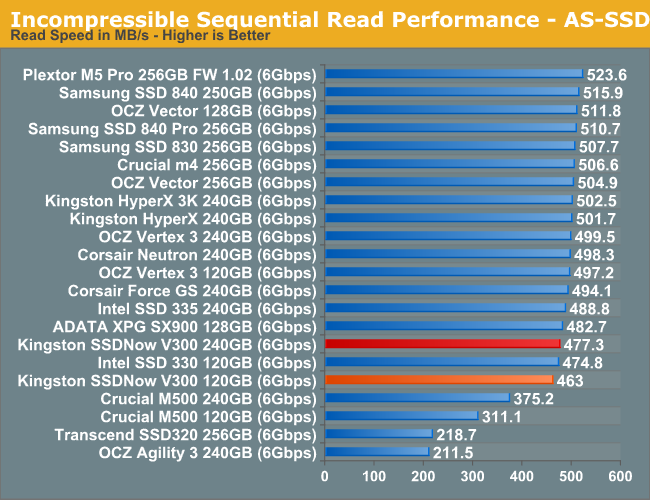
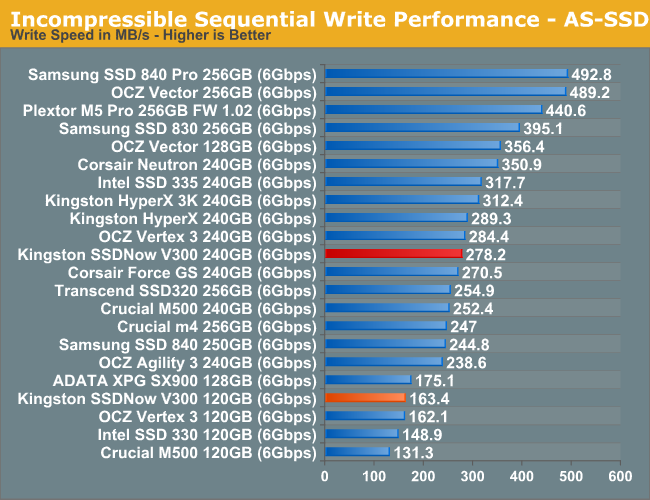










43 Comments
View All Comments
ericgl21 - Monday, May 6, 2013 - link
How do you manually optimize it in Vista?Raikku - Tuesday, June 11, 2013 - link
I bought V300 120Gb, it's with 506 firmware and it doesn't work as it should. It's properly in SATA3-connecter(ASRock Ext4's Intel SATA3, not Marvel) and it give under 200Mb/s reading speeds, more precisely those speeds are around 180Mb/s.My other SSD, which is Vertex 4, give almost 500Mb/s in those same tests.
KevinWinters - Monday, August 4, 2014 - link
I'd like to add this about the product. I have been volunteering my time and money to help my local catholic elementary school upgrade their technology, Let me tell you they, are on an amazingly small budget so anything goes, I even investigated refurbished Dell 755's just to get them onto Windows 7 because all their machines were windows XP.I came upon the idea of turning 30 windows XP laptops into Windows 7 laptops by adding a little memory and an SSD drive, I needed a very cheap SSD drive and did all my research via web reviews, I really hesitated on the Kingston 120 GB drive as almost all reviews were very angry about some NAND changes, but I noticed that each review was followed by a polite response from the vendor so I decided I liked the idea of the vendor keeping responsibility, so I gave it a try. So here is my review:
For the price: a fantastic improvement over HDD, totally worth it, maybe some people who are totally into specs will show how bad it is in some ways, but it has saved the day in this poor, elementary school and I thank Kingston for their low price and significant improvement over a mechanical drive.